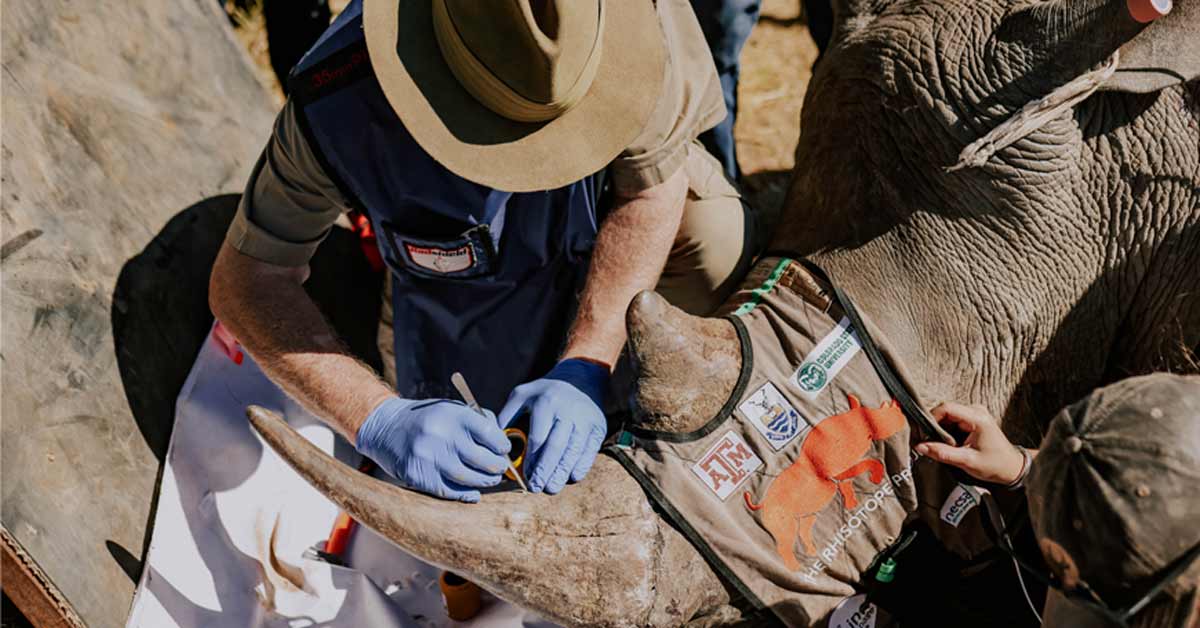In 2024, approximately 420 rhinos were poached in South Africa. And over the last decade, an estimated 8,000 rhinos have been lost to poaching in Africa as a whole.
Rhinos are critically endangered, and the sport of poaching them is part of an international web of criminal activity, in which poachers track and kill rhinos in protected areas and often smuggle their horns across borders to make money.
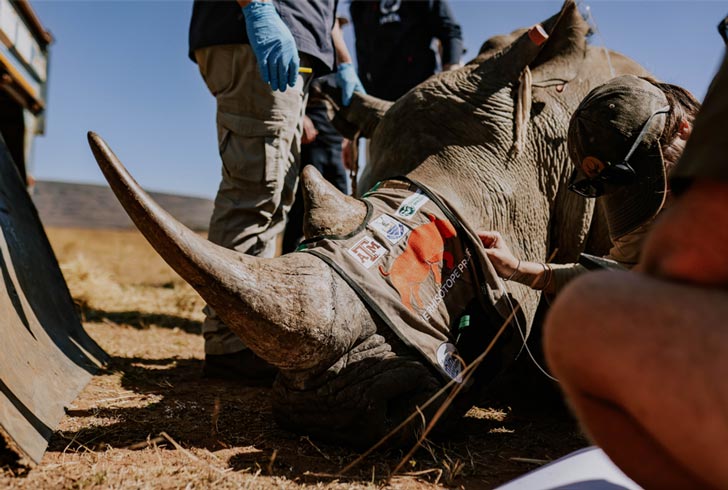
While poaching statistics have been down in recent years, wildlife and conservation experts are continuing their efforts to end poaching for good.
In Mokopane, South Africa, researchers at the University of Witwatersrand, Johannesburg have launched the Rhisotope Project, an initiative that aims to disrupt the illegal rhino horn trade by making rhino horns radioactive.
Don’t worry — this comes at no harm to the animals.
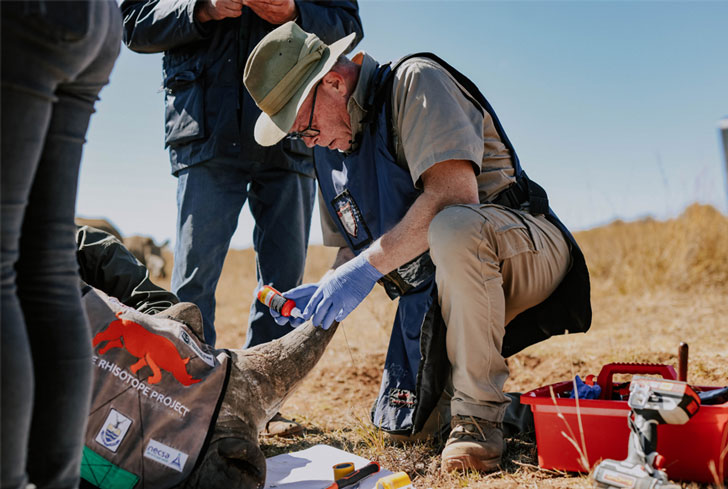
What scientists do is embed low-level radioactive isotopes into the horn of a rhino. These can be detected by radiation detection equipment at countries’ borders around the world, making it easier to intercept trafficked horns.
Six months ago, the project began, and radioactive materials were embedded into the horns of 20 rhinos at the Unesco Waterberg Biosphere. During this time, veterinary exams and blood testing confirmed that the rhinos were unharmed by the radioisotope levels used.
But the low levels can still be recognized by radiation detectors at airports and borders, and even inside full 40-foot shipping containers, the researchers concluded.
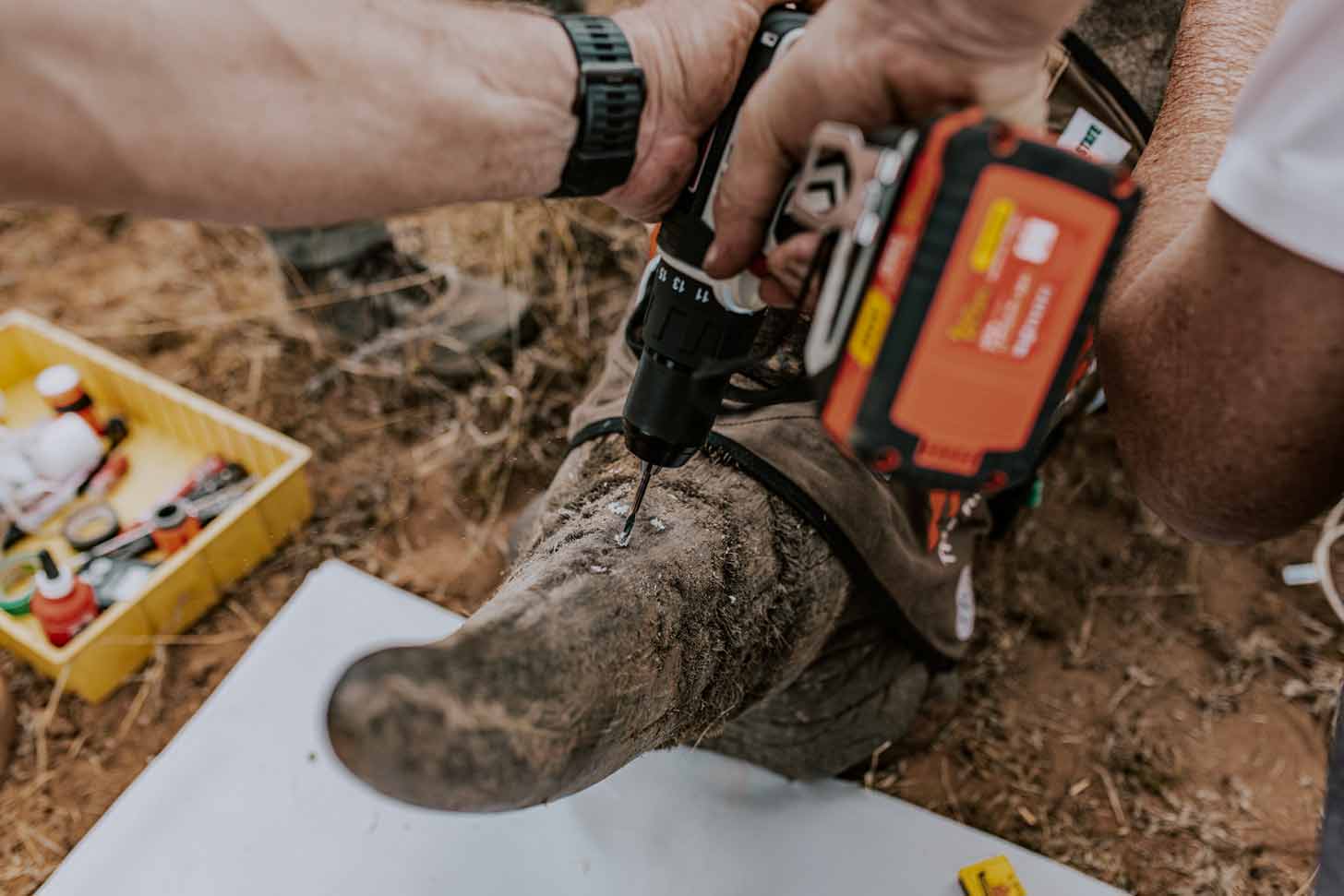
“We have demonstrated, beyond scientific doubt, that the process is completely safe for the animal and effective in making the horn detectable through international customs nuclear security systems,” says Wits University professor James Larkin, who is also the Chief Scientific Officer of the Rhisotope Project.
The researchers also tested the approach using 3D-printed rhino horns with identical shielding properties of real keratin, the organic material of which rhino horn is made.
“We simulated transport scenarios with the 3D-printed horns on carry-on luggage, air cargo shipments and priority parcel delivery systems and in each case, even a single horn with significantly lower levels of radioactivity than what will be used in practice successfully triggered alarms in radiation detectors,” Larkin explained.
After this testing of 20 rhinos and the 3D-printed models, the Rhisotope Project has officially been launched, with five rhinos injected earlier this week. It represents what scientists hope is the start of a “mass injection” of the declining rhino population, according to AP Africa.
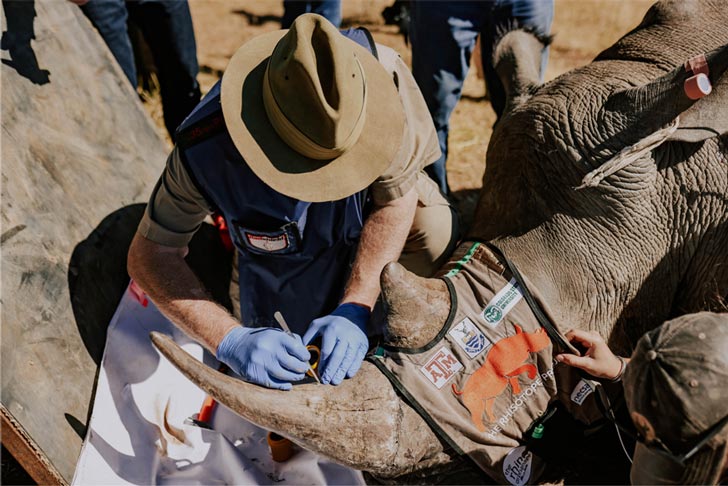
“This project exemplifies how nuclear science can be applied in novel ways to address global challenges,” International Atomic Energy Agency Director General Rafael Mariano Grossi said in a statement.
“By leveraging existing nuclear security infrastructure, we can help protect one of the world’s most iconic and endangered species.”
The two rhino species targeted in this campaign include the White Rhino, which is classified as “near threatened,” and the “critically endangered” Black Rhino.
The Rhisotope Project, which operates as a registered nonprofit, encourages public and private rhino owners, NGOs, and conservation groups to contact them as soon as possible to get their rhinos treated with radioisotopes.
“Our goal is to deploy the Rhisotope technology at scale to help protect one of Africa’s most iconic and threatened species,” Jessica Babich, CEO of the Rhisotope Project, said.
“By doing so, we safeguard not just rhinos but a vital part of our natural heritage.”
Header image courtesy of University of Witwatersrand, Johannesburg
